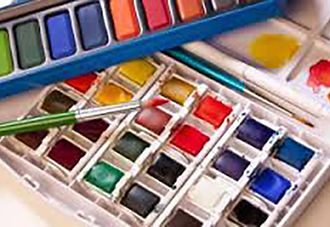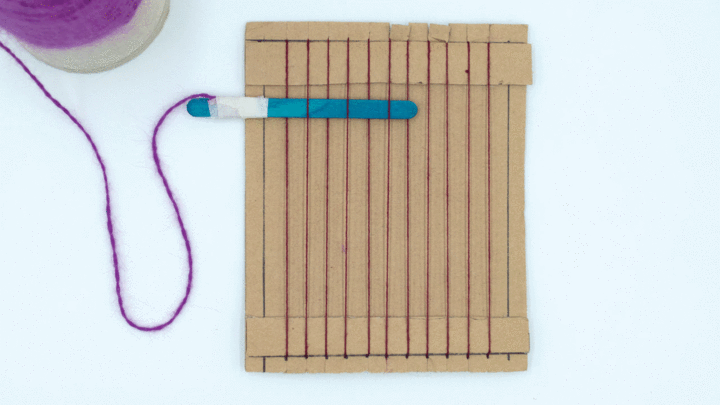MS. FEENEY'S ART CLASS

Watercolor Paint
What is it?
Watercolor is a painting method in which the paints are made of pigments suspended in a water-based solution.
How do you use it?
Watercolor paint generally has a translucent quality, which is great for ethereal or emotive effects. You can also layer imagery so that what is underneath shows through. On the other hand, it is difficult to cover mistakes, due to the translucency of the medium. For this reason, pre-planning is important. This is important to know when learning how to watercolor! Watercolor artists will normally sketch in their composition very lightly with a pencil before beginning to paint. Another characteristic of watercolor paint is that is generally dries lighter than it appears when first applied. This may take some getting used to in the beginning.

Loom and Weave
What is it?
Loom
A Loom is the structure that you use to give your weave support and tension as you work.
Weave
-
The warp thread is the thread that is strung over the loom vertically, and holds the tension while you weave. This is the backbone of your weave.
-
The weft thread is the thread that you weave between, around, and all over the warp threads. It creates your patterns and design in the weave.

Oil Pastel
What is it?
Oil pastel (also called wax oil crayon) is a painting and drawing medium with characteristics similar to pastels and wax crayons. Oil pastels consist of pigment mixed with a non-drying oil and wax binder.
How do you use it?
Start out by coloring the drawing roughly, and adding more details as you go along. Add more layers of colors to blend them together. Also, try blending them with your finger or an artist's tool to move the oil pastels around the drawing. Using your finger is the recommended method.

Papier-mâché
What is it?
Papier-mâché a substance made of pulped paper or paper pulp mixed with glue and other materials or of layers of paper glued and pressed together, molded when moist to form various articles, and becoming hard and strong when dry.
How do you use it?
After you’ve chosen what your creation is going to be, and the base is made. Now you need to stick it all together. Here are two basic paste recipes.
Both work well, you can choose based on the materials you have on hand. (Note: in humid environments pastes with glue seem to dry faster.
Paper Mache Flour Recipe
-
One part four
-
Two parts water
-
3 tablespoons salt
Combine flour and water until smooth, mix until the lumps are gone.
Add salt to prevent the growth of mold.
Paper Mache Glue Recipe
-
One part water
-
Two parts glue
Mix together in large glass bowl until smooth.
The fine print for making Paper Mache
Now gather as many old news papers as you can and tear them into strips. Each strip should be about 1 inch wide and 6 inches or so long. It does make a difference if you cut them. For some reason torn papers are easier to work with and the finished product is smoother.
Armed with news paper strips and paste, begin covering your form. No, wait! This is very messy stuff. You may want to lay down a tarp or sacrificial table covering so you don't have hours of clean up.
OK, now begin covering your form. Dip each strip of paper into the paste and onto the form. Make sure the strips overlap and cover the entire base. It is best to lay the strips criss-crossing each other in many directions to make a stronger finished product.
Each project needs three layers. Let each layer dry for 24 hours in-between applications.